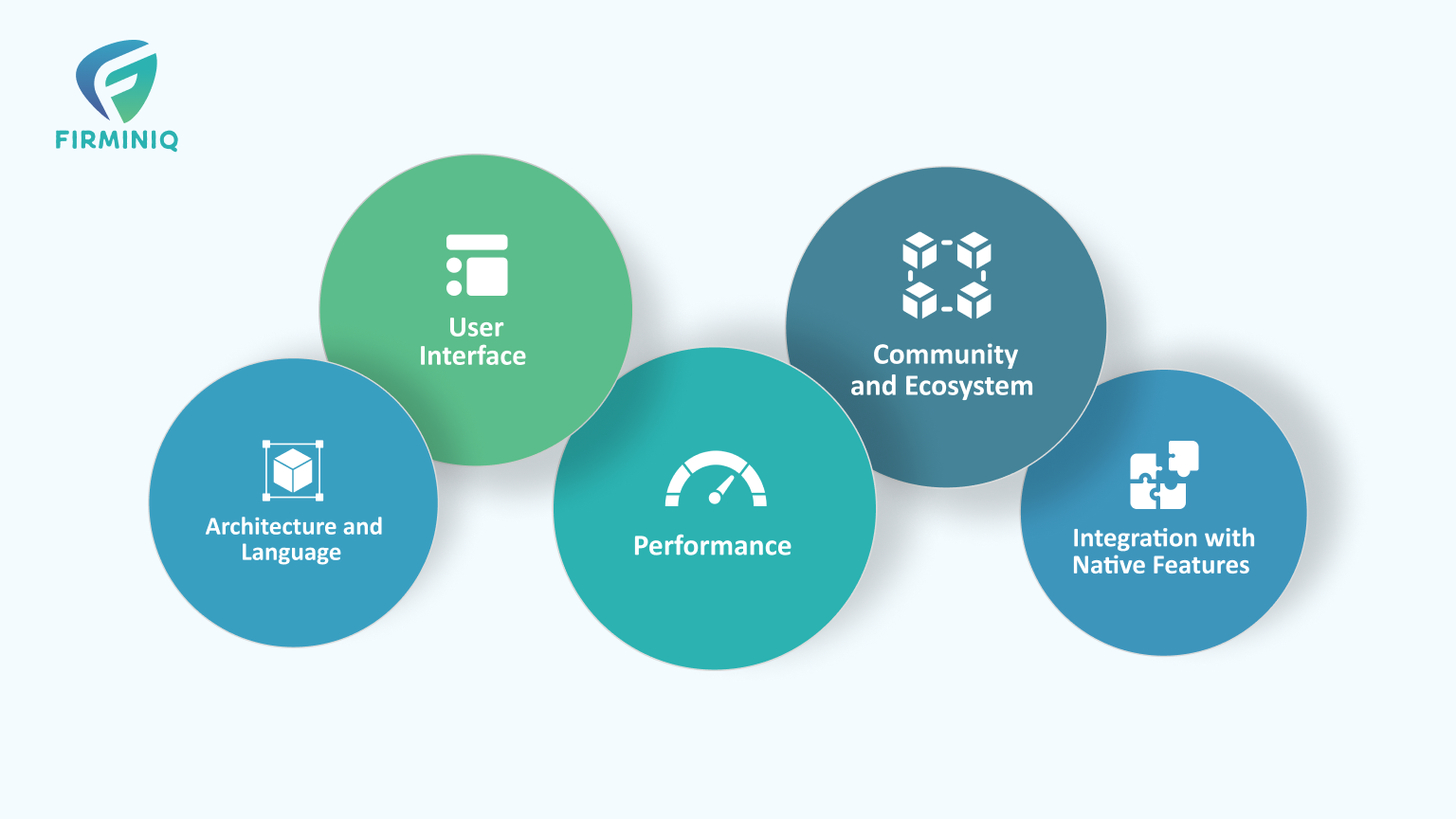In the fast-evolving landscape of mobile app development, cross-platform frameworks have become indispensable tools for developers aiming to reach a broad audience with their applications. Two prominent contenders in the cross-platform development arena are Flutter, developed by Google, and React Native, maintained by Facebook. In this blog, we’ll explore the technical aspects of both frameworks, highlighting their strengths, weaknesses, and key considerations for developers.
Technical Aspects of Both Frameworks

1. Architecture and Language
Flutter
Architecture
Dart, the programming language used in Flutter, employs a reactive framework known as “widgets.” Flutter’s architecture is centered around a widget tree, enabling a consistent and expressive UI.
Language
Dart, with its strong typing and Just-in-Time (JIT) compilation, provides a structured approach to development.
React Native
Architecture
React Native follows a component-based architecture where UI components are reusable and independent. It depends on a bridge for communication between JavaScript and native modules.
Language
JavaScript, particularly ECMAScript 6 (ES6), is used for React Native development. The framework leverages the popular React library for building UI components.
2. User Interface
Flutter
UI Consistency
Flutter offers a highly consistent UI across platforms, thanks to its custom widgets and a single codebase for both iOS and Android.
Customization
Extensive customization is possible through the rich set of built-in widgets or by creating custom widgets.
React Native
Native Components
React Native utilizes native components, resulting in a native look and feel. However, achieving pixel-perfect consistency may require platform-specific adjustments.
Flexibility
Developers can fine-tune the UI for each platform, allowing for platform-specific UI optimizations.
3. Performance
Flutter
Compiling to Native Code
Flutter compiles to native ARM code, providing high-performance applications.
Hot Reload
The Hot Reload feature allow developers to see changes instantly, contributing to a more efficient development process.
React Native
Bridge Overhead
React Native relies on a bridge to communicate with native modules, introducing a potential overhead. However, optimizations have been made to improve performance.
Fast Refresh
Similar to Flutter’s Hot Reload, React Native’s fast refresh facilitates quick iterations during development.
4. Community and Ecosystem
Flutter
Growing Community
Flutter’s community is expanding rapidly, and its popularity is on the rise.
Dart Package Ecosystem
While Dart’s ecosystem is smaller than JavaScript’s, Flutter has a growing collection of packages for common functionalities.
React Native
Mature Community
React Native has a mature and extensive community with a wealth of resources and third-party libraries.
NPM Ecosystem
Leveraging the vast NPM ecosystem, React Native benefits from a wide range of available packages and modules.
5. Integration with Native Features
Flutter
Platform Channels
Flutter provides platform channels for integrating with native features, allowing seamless communication between Dart and native code.
React Native
Native Modules
React Native’s native modules enable developers to integrate platform-specific features easily. The bridge facilitates communication between JavaScript and native code.
Conclusion
Choosing between Flutter and React Native depends on project requirements, team expertise, and the desired balance between performance and development speed. Both frameworks offer powerful solutions for cross-platform mobile development, and developers should weigh the technical aspects discussed here against their project needs. As technology evolves, the decision between Flutter and React Native will continue to be influenced by advancements and the preferences of the development community.






